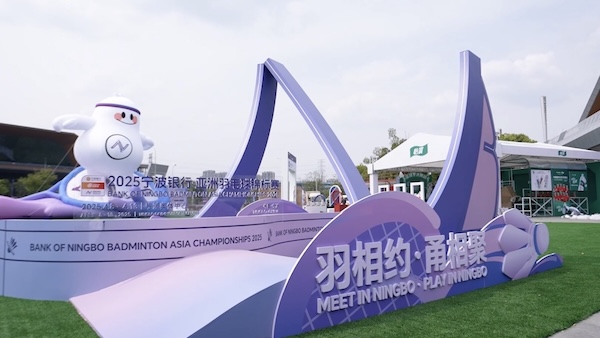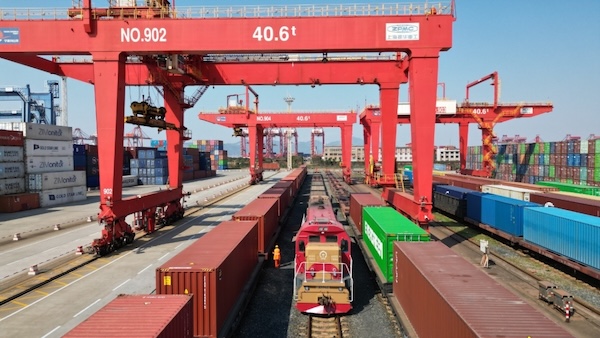Ningbo Shenma gives wing to green transition with cutting-edge products
With the rollout of its cutting-edge copper-aluminum composite products, Ningbo Shenma Group in Zhejiang province has emerged as a front-runner in the global green power transmission sector.
Functioning as large cables, bus ducts are a new form of current-carrying conductors that are gradually displacing the conventional transmission method in low-voltage power delivery systems.
Traditional bus ducts are primarily made of either pure copper or aluminum, each with its own set of pros and cons. Aluminum is mostly applied in scenarios where high electrical conductivity is not required. Conductible copper, renowned for its high conductivity, constitutes a substantial portion of the world's copper consumption, with a significant chunk allocated to bus ducts.
"For instance, China annually consumes about 14 million metric tons of copper, with 16 percent used for electricity, of which 30 percent is used in bus ducts," said Xu Yingchang, chairman of Ningbo Shenma.
The dominance of copper materials in bus duct costs exceeding 70 percent has led to high manufacturing expenses, posing the biggest obstacle to industry development, while also presenting commercial opportunities for Shenma.
Shenma is a producer of aluminum discs in Cixi, a county-level city in Ningbo. Leveraging its expertise in aluminum production, the company embarked on a "copper-aluminum substitution" program five years ago, investing over 30 million yuan ($4.19 million) annually in research and development. This relentless pursuit culminated in the development of the first copper-aluminum composite plate.
The innovative composite material, featuring a copper core sandwiched between aluminum layers, adopts a unique solid-liquid cast-rolling bonding technology, creating a eutectic bond at the interface. It not only reduces copper usage by nearly half, significantly cutting costs and weight, but also enhances heat dissipation while maintaining excellent conductivity. It can be applied to fields such as power, electrical, photovoltaics and new energy vehicles, with vast market potential.
The company's breakthrough has garnered widespread recognition, with leading international electrical brands like Schneider, ABB and Siemens forming strategic partnerships to incorporate its copper-aluminum eutectic composite rows into their bus duct products.
"Our materials and technologies enable cost reduction and performance enhancement for our partners. That's why they collaborate with us," Xu said.
Shenma's innovation spree did not stop there. Building upon the success of copper-aluminum eutectic composite rows, it introduced high-conductivity aluminum, which boasts a nearly 20 percent higher conductivity than pure aluminum while maintaining excellent tensile strength.
Xu said this material, abundant in nature and economical, has also been applied to bus ducts, resulting in cost savings of over 50 percent compared to pure copper bus ducts, while offering over 60 percent of pure copper's conductivity.
Xu said that the dual offerings of copper-aluminum eutectic bus ducts and high-conductivity aluminum bus ducts complement each other, catering to diverse market needs.
A company in Ningbo, which is constructing a new 300,000-square-meter factory, requires 18,000 meters of bus ducts. It found that using cables would cost more than 30 million yuan, while pure copper bus ducts would cost 24 million yuan. However, by opting for the new type of bus ducts produced by Shenma, the investment would only be 15 million yuan. The installation of these new bus ducts is currently underway.
"We are confident in our ability to revolutionize the bus duct industry with our innovative solutions," Xu added.
Yu Yin in Hangzhou contributed to this story.

 Ningbo seabird project seeks international volunteers
Ningbo seabird project seeks international volunteers  Jakub's journey: From shipyard to sea
Jakub's journey: From shipyard to sea  Badminton Asia COO applauds Ningbo
Badminton Asia COO applauds Ningbo 


